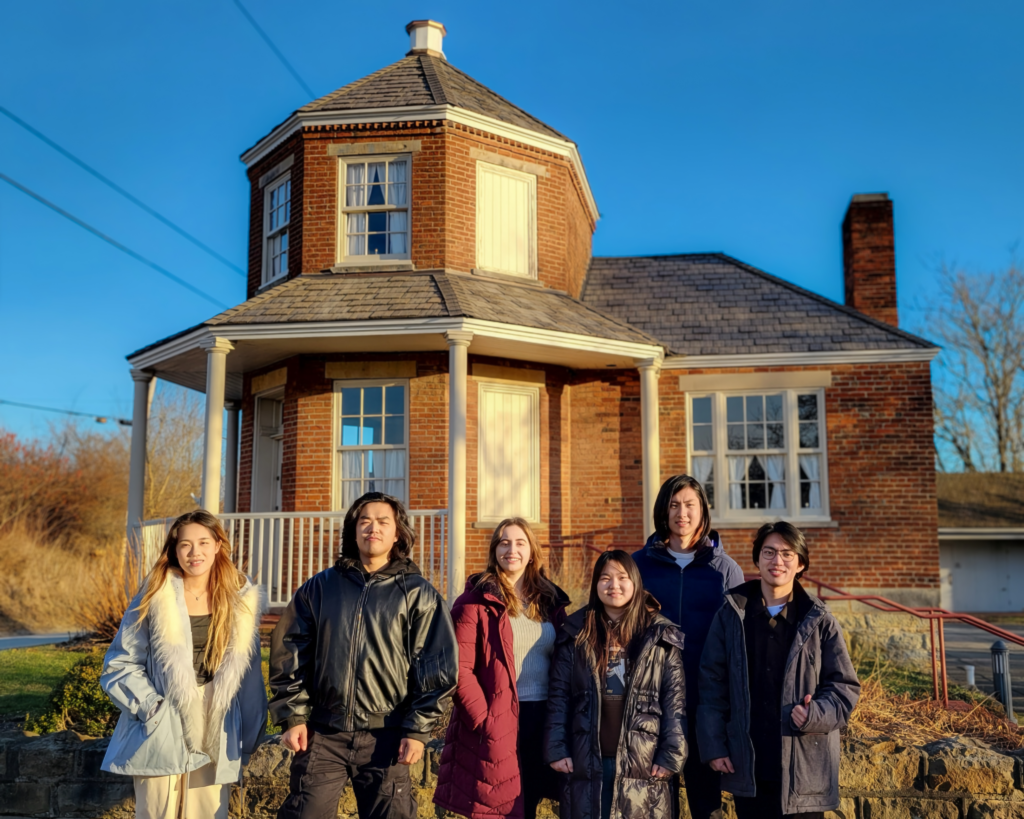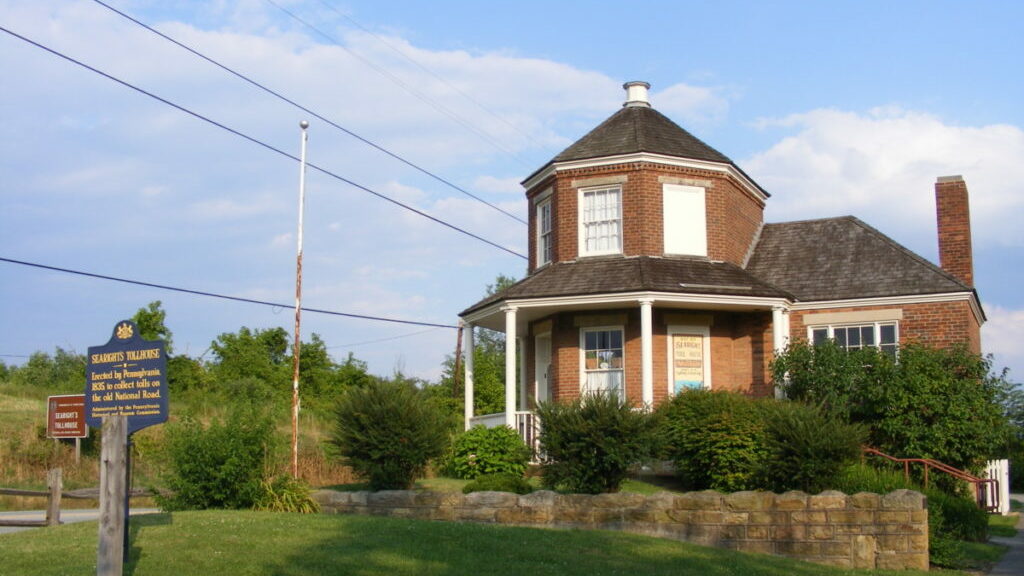The towARds team at Carnegie Mellon University’s Entertainment Technology Center is developing a mobile augmented reality (AR) experience grounded in American history. The project reimagines the National Road, the nation’s first federally funded highway, which connected Cumberland, Maryland to Vandalia, Illinois and shaped the country’s development during the early 19th century.
Using Niantic’s SDK for Unity to detect different semantic layers, such as the ground, buildings, and sky, this AR application brings the National Road to any open outdoor environment, transforming a smartphone into a portal across time and space. Players can witness the National Road’s evolution and explore the rich history of transportation along this vital thoroughfare. This project serves as an immersive window to the past, allowing players to experience a slice of life along the National Road firsthand.
Project Instructor: Mike Christel

Points of Contact & Related Projects:
National Road & Zane Grey Museum
The National Road Museum in Zanesville, Ohio, features dioramas that visualize how the road was constructed in the early 1800s and expanded west through the country. The National Road was the first federally-funded highway in the United States, also at one point called the Main Street of America. The museum showcases how many towns popped up along the road and changed with the road as the nature of travel and different forms of transportation evolved.

In the early 19th century, funding for the National Road’s construction and ongoing maintenance was a significant challenge for governments. To overcome this, the concept of toll roads was introduced. Toll houses were erected at strategic points along these roads, where travelers had to stop and pay a fee in exchange for using the road. These fees varied based on the type of traffic and how much damage they would do to the road’s surface. The collected tolls were then used to finance road maintenance and improvements.

The Portals Project (part of the Perennial Project in Brownsville, PA) is a program for local high school students in Brownsville, Pennsylvania, which takes 3D scans of historical locations for educational and preservation purposes. Their scanned buildings include stops on the National Road, such as Searights Tollhouse.

